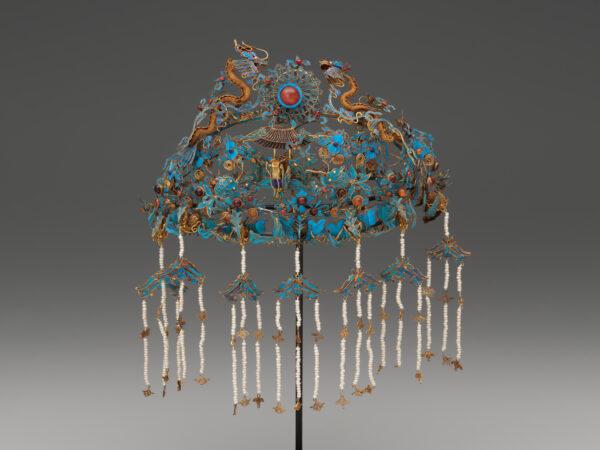For a newlywed couple in 19th-century China, it’s the end of a joyous day of marriage rites and the beginning of their life together as they step into their bed chamber. She wears a striking gold and turquoise bridal coronet that’s embellished with semiprecious gems and a veil of pearls. As per Chinese tradition, the husband parts his wife’s veil only once the wedding celebrations are over and the newly wedded couple are alone in their bed chamber.

A tiara, 19th century, Qing Dynasty (1644–1912), China. Promised gift of Barbara and David Kipper. Art Institute of Chicago. Art Institute of Chicago






